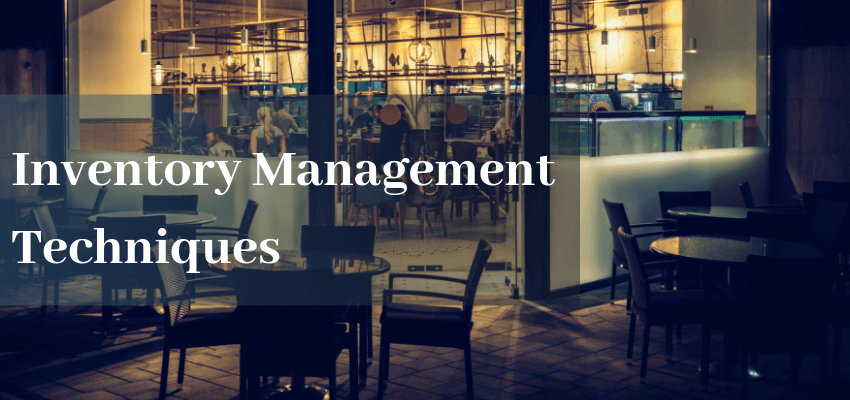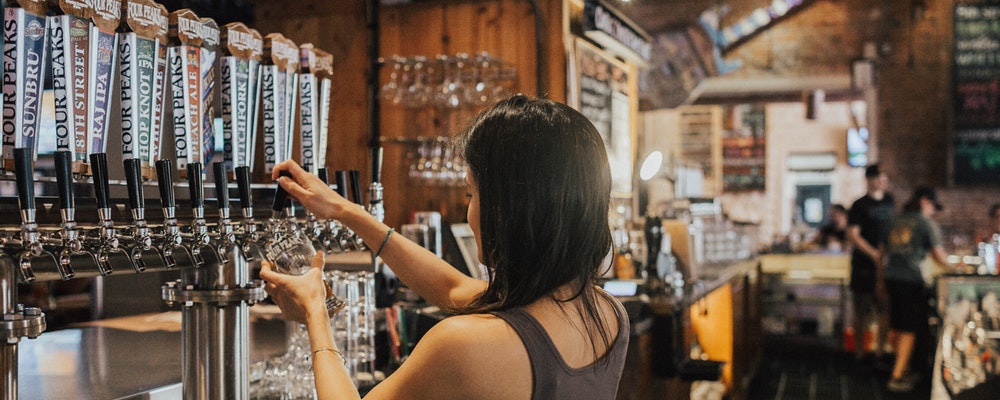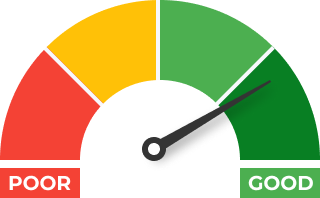Whether you have a restaurant or bar, one of the most important things you’re most likely concerned about is your inventory. How are you going to efficiently manage your restaurant inventory so that you can prevent loss? The best way is to employ a reliable system for inventory management so that you can accurately keep track of what’s being sold, know exactly what inventory you have at any given moment, and that your employees aren’t part of the problem.
Here’s what you can do to minimize inventory loss:
1. Implement a Point of Sale System
Point of Sale (POS) systems are used around the world in restaurants, bars, and retail stores. A computerized system helps you track sales and cash flow and manage your food and beverage inventory. POS systems are also able to process credit card sales, keeping all your serving staff accountable for what they’re selling. Once food and beverage orders have been entered in the POS, they can’t be modified, making it impossible for any employee to make changes in the computer without having a password or key card.
A POS system can also give you an accurate count of money and inventory during a shift change. You’ll know exactly what inventory was sold and how much money should be in your register during any employee shift. Real-time updates are invaluable and save you a lot of money – not only will you prevent employee theft you’ll also have an accurate listing of what inventory you need to order and replace.
2. Pre-Authorization on Your POS
Having pre-authorization on your point of sale system lets your staff swipe customer credit and debit cards. The information is saved along with the customer order tab. This allows you to verify that the card isn’t stolen and that it has sufficient funds to cover the check. This feature can be particularly important if your restaurant or bar is busy and you’re selling alcohol. You’ll be able to prevent loss from unpaid bills due when your customer can’t pay or if they decide to leave without paying.
Preauthorization also speeds up service – your staff will spend less time at the POS as they only need to do the preauthorization one time. They’ll still need to enter order information to keep your inventory accurate.
3. POS User Access Permissions
Most POS systems will allow you to customize permissions and user access. This gives you more control over the data that’s put into the POS. You can decide which employees can use the system and what they can do when they’re using it. You can set permissions based on job description or by individual staff permissions.
For instance, you may allow all your servers full access while limiting, if not prohibiting, access for kitchen staff without a manager’s approval. Or you may allow certain employees, such as your manager, to have full access so they can retrieve information needed from the POS for reports on inventory or employee activity.
4. Effective Employee Training
Not everyone you hire will have experience using a POS system. It’s important that you train every employee in the correct usage of POS. This includes how to use it and what it does. It’s helpful for employees to know that they need to be precise with putting in their orders and cash. When they know that POS tracks inventory and usage, employees can become part of the solution. Come up with team strategies for reducing waste and preventing loss of inventory by tracking all food and beverages that go out and money that comes in.
Training your staff on the standard operating procedures for inventory management also makes them aware that items are being tracked, which can often dissuade them from considering theft.
5. Use the FIFO Principle
The principle of first in, first out is used by the majority of restaurants and bars around the world. The concept is simple: the inventory that you bought first is the stock that’s sold first. This allows for the rest of your inventory to always consist of the purchases you made last.
Why use FIFO? It avoids waste and helps to preserve the freshness of your inventory. When you don’t pay attention when inventory comes in, you’re at risk of throwing out food that has reached its expiration date and is no longer safe or fresh enough to use.
The FIFO method is the best choice for restaurants where inventory is perishable or where there is a small demand for some items. FIFO also provides you with a reliable system for keeping track of your daily, weekly, and monthly purchasing orders which allows you to buy just the right amount of inventory.
6. Get Inventory Requisitions in Writing
You rely on your staff to notify you when inventory is running low. Another way to control and manage your inventory and minimize food loss is by developing a requisition process so that whenever an item is moved from storage to the kitchen, you know about it. Have employees fill out a form that indicates what items and how much of each is needed by the kitchen. This gives you an accurate record of what’s happening to your inventory.
Depending on the size of your restaurant, it can be difficult to enforce this requisition policy. Some employees may find it faster to just take the items from storage, leaving you with an inaccurate total of what you have on the shelves. You can eliminate this problem by limiting who has access to storage rooms, refrigerators, and freezers.
One of the other benefits of a requisition procedure is that you can use it to put a dollar value on the items that are requested by each section of your restaurant, such as kitchen or front of house. This can help you calculate expenses.
7. Unplanned Inventory Check
Your employees will be aware of how and when you do your inventory count. Do an unplanned inventory check when no one is expecting it. It can be a quick spot check for certain items, or it can be a full kitchen and bar inventory to determine if there are any shortages, surpluses, or possible theft that you need to deal with.
Consider doing these unplanned checks on your own. No employer wants to think about it, but it may be possible that the person who usually does the inventory is putting in false information. The results of an unplanned check can indicate theft and loss, letting you know sooner that you need to do damage control.
8. Yearly Inventory
At least once a year plan on doing a full inventory count. This may seem redundant – after all, you’ve been tracking inventory almost daily throughout the year. But a yearly inventory is going to be more than just making a count of food and other frequently used stock items. A full inventory count should involve a thorough account of everything in your business. This includes food items, kitchen equipment, napkins, and even cleaning supplies.
Most restaurants and bars do their annual inventory check during a slow period, when they can set aside a day for all staff to assist. It can help to organize the stockroom, refrigerator, and freezer ahead of time so inventory can be accurately and quickly counted.
9. Analyzing Employee Theft
Employee theft is prevalent in the restaurant and bar business. One way that you can reduce and mitigate theft is by careful and controlled management of your staff. Just one employee can cause a lot of damage to your business and result in significant losses. More than one employee involved in theft and you double the damage and your losses. Here’s how you can analyze theft and determine if an employee is being dishonest:
- Take note of how long orders stay open on the POS. If someone consistently has orders that are open longer than others you should be questioning why.
- Do an unplanned inventory of items that are frequently used to prepare popular foods and drinks. These will be the items that your employees have the most access to.
- Know the average time for service. If the average serving time is dropping keep a closer eye on your staff to determine who is slower and why. Take a look at what orders are being put in, making note of the food and beverages that were ordered – if there’s theft going on, you’ll soon be able to see a pattern. All of this information is available to you on the POS.
If you’re operating a restaurant or bar, these are just a few of the things that you can do when it comes to restaurant inventory management. Your main goal is to prevent loss and theft – both can significantly affect your profit margin at the end of the year. Come up with techniques to simplify and streamline the process of inventory management so you’re able to have full control over sales and inventory. Proper inventory management keeps you alert to any inconsistencies or theft in your business.
Glimpse helps you grow revenue and prevent loss using video recognition software. We compare your POS data with your security footage so you know if there’s a difference between your sales and what actually went over the counter. Check out our pricing.

Business Insights With Glimpse

Glimpse provides business analytics and loss prevention technology for bars, restaurants and nightclubs.
Learn MoreYou might also like:











 +1 (786) 292-2373
+1 (786) 292-2373 insights@glimpsecorp.com
insights@glimpsecorp.com





